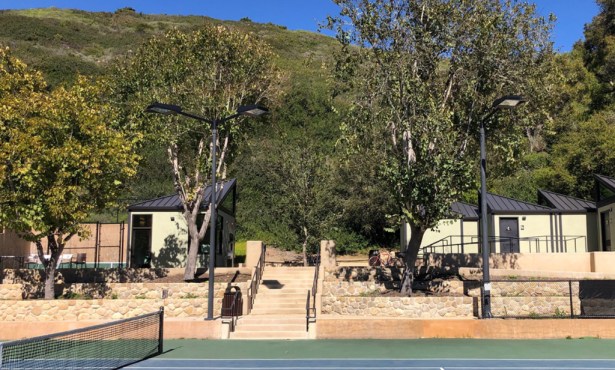Proof in the Hearing
Paul Galbraith. At the Santa Barbara Museum of Art,
Thursday, October 19.
Reviewed by Josef Woodard
 In the hearing of Paul Galbraith, as at
In the hearing of Paul Galbraith, as at
the Museum of Art last week, one instantly senses the presence of
greatness. His mastery of tone, articulation, and interpretation,
not to mention his resourcefulness as an arranger/transcriber, has
made him one of classical guitar’s top artists. In the seeing,
though, a Galbraith recital can be slightly jarring, given the
classical guitar world’s conservative bent. Scottish-born and São
Paulo-based, Galbraith long ago swapped his six-string instrument
for an inventive eight-string model, the “Brahms guitar,” which is
held upright like a cello. An end pin anchors it in a resonant
wooden box for added sonic oomph.
By the second or third live encounter, you’re liable to be an
avowed Galbraith fan and wonder why more guitarists haven’t taken
up this odd, rich-sounding innovation. For now, Galbraith remains
pretty much a hero in a field of one, in terms not only of the tool
of his trade, but also his fresh attitude towards the
repertoire.
With all due respect to the grand Spanish guitar tradition,
which tends to bogart the classical guitar repertoire, there is a
wide world of music available for the intrepid arranger. Galbraith
takes this notion to heart, adapting such rarities as those he so
eloquently played in the intimate acoustics of the SBMA’s Mary
Craig Auditorium: Rameau’s Keyboard Suite in A; Mozart’s Piano
Sonata in F, K. 280 (classical work on guitar is still a relatively
uncharted water, which Galbraith also covered with his great Haydn
CD); and Ravel’s Mother Goose Suite, all of which sounded utterly
natural and persuasive on Galbraith’s eight-string guitar.
For contemporary measure, Galbraith played living Czech composer
Petr Eben’s fascinating and cerebral Tabulatura Nova — Rhapsodic
Variations on an Old Bohemian Love Song, a mixture of dissonance,
tension, and folkloric sweetness. The piece ends with a tune in
high harmonics — an eerie bit of tenderness after the tumult.
Those who came to bask in Bach, a Galbraith specialty, were also
duly served. With his commanding reading of the fourth Bach cello
suite and a short, heart-melting arrangement of an organ chorale
prelude as an encore, Galbraith’s glorious Bach stirred up the
Baroque master’s mixture of emotional epiphany and objective
rapture. This remarkable guitarist gets it, among many other
secrets in the classical repertoire, whether or not adapted for
guitar … yet. Stay tuned.



